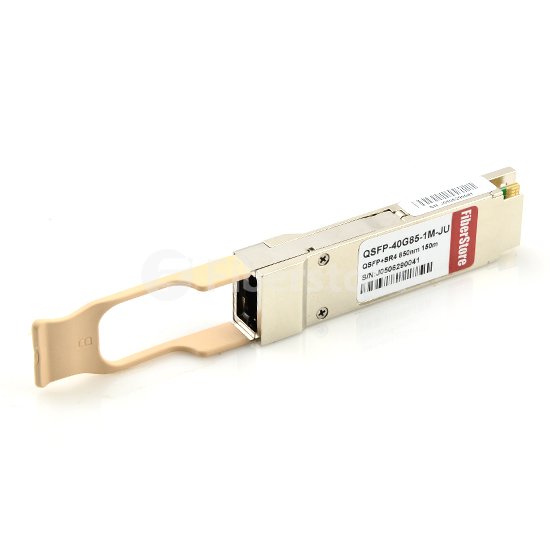January 27, 2016
40 Gigabit Ethernet is now being widely adopted within data centres. The demand for high data rates has come a long way since the ratification of the IEEE standard in 2010 and as this demand has increased so has the requirement for suitable cabling infrastructure. 40GBASE-SR4 laser optimized OM3 or OM4 fibre cable is one cabling option for 40 Gigabit Ethernet. What is 40GBASE-SR4? The following passage mainly talks about things you need to know about 40GBASE-SR4.
40GBase-SR4 is an interface for 40 Gigabit Ethernet. It is a fiber optic interface for multimode fiber of OM classes 3 and 4 with four parallel OM3 or OM4 fibers in both directions. "S" means short, indicating that it is an interface for short distances. The "R" denotes the type of interface with 64B/66B encoding and the numeral 4 indicates that the transmission is carried out over a ribbon fiber with four multimode fibers in every direction. Each lane has a 10 Gbit/s data rate. The distance depends on the OM class of multimode fiber, up to 100m and 150m on OM3 and OM4 fibers respectively.
40GBase-SR4 uses OM3 and OM4 laser-optimized multimode optical fibers for short reach 40 Gigabit Ethernet applications. OM3 and OM4 are laser-optimized 50/125 µm multimode optical fibers. Lasers are used as signal sources for category OM3 and OM4 fibers. These lasers are generally vertical-cavity surface-emitting lasers (VCSELs). This type of laser is considerably cheaper than, for example, Fabry-Perot lasers or distributed feedback lasers. Lasers have the advantage of being able to transmit data at higher rates. The 802.3ba standard defines the parallel operation of four OM3/OM4 fibers for 40 GbE in 40GBASE-SR4. Two fibers have to be used per link because this arrangement is full duplex operation, i.e. simultaneous transmission in both directions. Therefore the number of fibers increases to eight for 40GBASE-SR4.
40GBASE-SR4 QSFP+ (quad small form factor pluggable) modules usually use a parallel multimode fiber (MMF) link to achieve 40G. It offers 4 independent transmit and receive channels, each capable of 10G operation for an aggregate data rate of 40G over 100 meters of OM3 MMF or 150 meters of OM4 MMF. These transceivers house an MPO (usually an MTP) connector and are connected to other 40G ports or to 10G ports after the 40G signal is split to four channels. MPO/MTP connector provides a smooth transition to higher Ethernet speeds with minimum disruption and without wholesale replacement of existing cabling and connectivity components. An MPO/MTP connector has either 12-fiber or 24-fiber array. For 40GBASE-SR4 QSFP+ transceiver, a MPO connector with 12 fibers is used. 10G is sent along each channel/fiber strand in a send and receive direction and only 8 of the 12 fibers are required. The picture below shows a Juniper QFX-QSFP-40G-SR4 40GBASE-SR4 QSFP+ transceiver.

Fiberstore offers 40GBASE-SR4 QSFP+ transceiver for data centers and other high performance networking purposes. Our 40GBASE-SR4 QSFP+ transceiver is available in a wide variety of features to accommodate 40 Gigabit Ethernet datacom and telecom fiber networking applications. Fiberstore 40GBASE-SR4 QSFP+ transceivers are customized to function as a cost effective alternative compatible with most major brands, including Cisco, Juniper, Arista, Brocade, HP, Intel, and Extreme. Our hot-pluggable optical transceivers can help you achieve significant savings in operating costs while also maintaining a reliable networking backbone.
Posted by: jowang at
07:24 AM
| No Comments
| Add Comment
Post contains 559 words, total size 5 kb.
35 queries taking 0.054 seconds, 70 records returned.
Powered by Minx 1.1.6c-pink.









